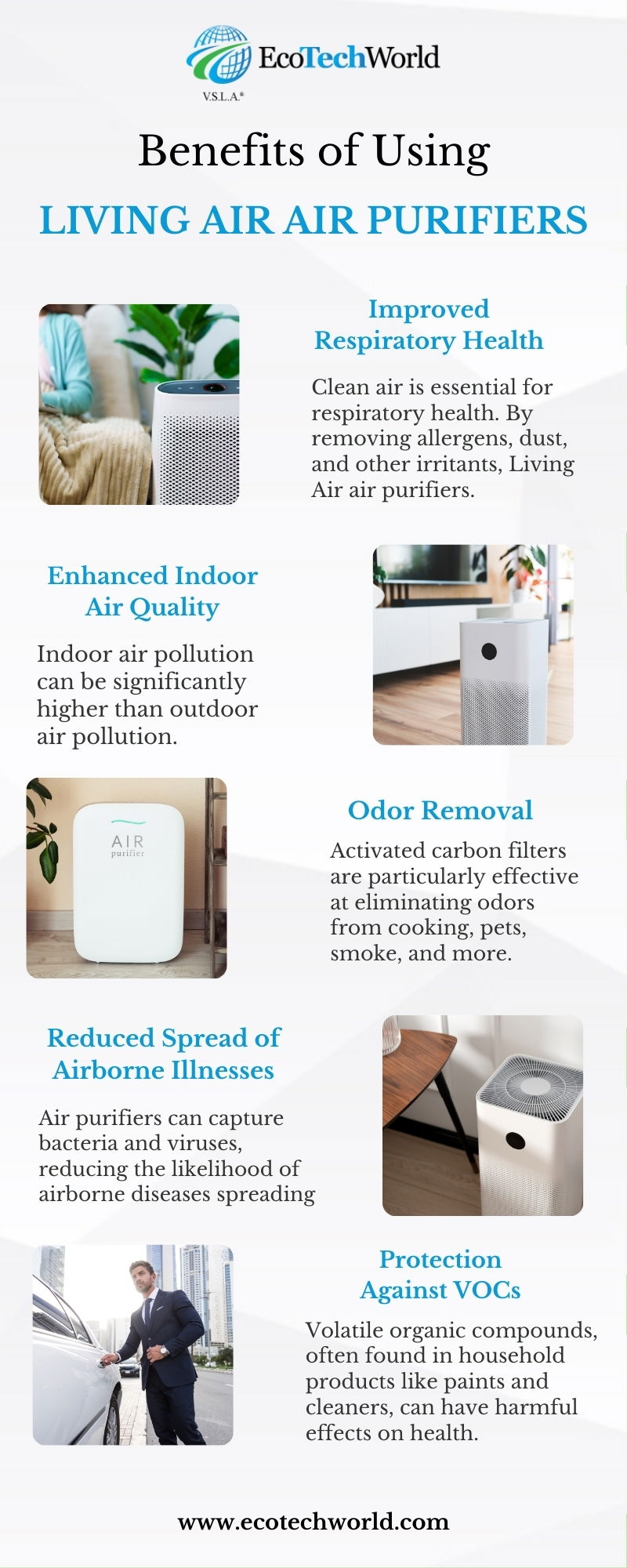How Do Living Air Air Purifiers Work?
Air quality is a crucial aspect of maintaining a healthy living environment. One effective solution to improve indoor air quality is through the use of air purifiers. Among various options available in the market, Living Air air purifiers have gained recognition for their efficacy. This comprehensive guide will explore the benefits, functionality, and considerations related to Living Air air purifiers without promoting any specific brand.

What are Living Air Air Purifiers?
Living Air air purifiers are devices designed to clean indoor air by removing contaminants such as dust, pollen, mold spores, smoke, and volatile organic compounds (VOCs). These purifiers utilize a combination of technologies, including HEPA (High-Efficiency Particulate Air) filters, activated carbon filters, and sometimes ionizers, to achieve their air cleaning goals.
HEPA Filtration:HEPA filters are a critical component in most air purifiers. They are designed to capture particles as small as 0.3 microns with an efficiency of 99.97%. This means they can effectively trap common allergens like dust mites, pet dander, and pollen, making the air significantly cleaner and safer to breathe.
Activated Carbon Filters:Activated carbon filters are another essential feature. These filters are excellent at removing odors, smoke, and VOCs from the air. The porous nature of activated carbon allows it to absorb and neutralize gaseous pollutants, contributing to a fresher indoor environment.
Ionizers:Some Living Air air purifiers come equipped with ionizers, which release negatively charged ions into the air. These ions attach to positively charged particles, causing them to clump together and fall out of the air. This process can help reduce airborne particles, although it should be noted that ionizers can produce ozone, which may have health implications if not properly managed.
Benefits of Using Living Air Air Purifiers
Improved Respiratory Health:Clean air is essential for respiratory health. By removing allergens, dust, and other irritants, Living Air air purifiers can help reduce symptoms of asthma and allergies, leading to better overall health.
Enhanced Indoor Air Quality:Indoor air pollution can be significantly higher than outdoor air pollution. Air purifiers help to reduce indoor pollutants, providing a cleaner, healthier environment, especially in urban areas with high pollution levels.
Odor Removal:Activated carbon filters are particularly effective at eliminating odors from cooking, pets, smoke, and more. This ensures that your living space always smells fresh and clean.
Reduced Spread of Airborne Illnesses:Air purifiers can capture bacteria and viruses, reducing the likelihood of airborne diseases spreading, particularly in crowded or shared spaces.
Protection Against VOCs:Volatile organic compounds, often found in household products like paints and cleaners, can have harmful effects on health. Air purifiers with activated carbon filters can effectively reduce the concentration of VOCs in the air.
Considerations When Choosing an Air Purifier
Room Size:The effectiveness of an air purifier depends on its capacity to clean the air in a given space. Ensure that the model you choose is suitable for the size of the room where it will be used. Most manufacturers provide a recommended room size for each model.
Filter Replacement:Regular maintenance and filter replacement are crucial for the continuous effectiveness of an air purifier. Check the manufacturer’s recommendations for how often filters should be replaced and the cost associated with replacement filters.
Noise Level:Some air purifiers can be noisy, which may be disruptive, especially if used in a bedroom or office. Look for models that operate quietly or have adjustable fan speeds to manage noise levels.
Energy Consumption:Consider the energy consumption of the air purifier, especially if it will be running continuously. Energy-efficient models can help keep electricity costs down.
Additional Features:Some air purifiers come with additional features such as air quality sensors, automatic mode, remote control, and smart connectivity. These features can enhance the convenience and functionality of the device.
Using Living Air Air Purifiers Effectively
Proper Placement:Position the air purifier in a central location in the room for optimal air circulation. Avoid placing it in corners or behind furniture where airflow might be restricted.
Regular Cleaning and Maintenance:Regularly clean the exterior and pre-filters of the air purifier to ensure it operates efficiently. Follow the manufacturer’s instructions for filter replacement and maintenance schedules.
Keep Doors and Windows Closed:To maximize the effectiveness of the air purifier, keep doors and windows closed while it is operating. This prevents outdoor pollutants from entering and ensures the air purifier can focus on cleaning the indoor air.
Monitor Air Quality:Some advanced air purifiers come with air quality monitors that provide real-time feedback on the air quality in your home. Use this feature to adjust settings and ensure optimal performance.
The Environmental Impact of Air Purifiers
While air purifiers contribute to healthier indoor air, it is important to consider their environmental impact. Here are a few points to keep in mind:
Energy Use:Continuous operation of air purifiers can lead to increased energy consumption. Choosing energy-efficient models and using them judiciously can mitigate this impact.
Filter Disposal:Used filters must be disposed of properly, as they can contain captured pollutants. Check local regulations for proper disposal methods to minimize environmental harm.
Sustainable Choices:Some manufacturers are now offering air purifiers with eco-friendly features, such as recyclable filters and energy-saving modes. Consider these options when making a purchase to reduce your environmental footprint.
Living Air air purifiers are a valuable tool for improving indoor air quality, offering numerous health benefits by removing pollutants, allergens, and odors from the air. Understanding the functionality, benefits, and considerations of using these devices can help you make informed decisions to ensure a healthier living environment. By choosing the right model, maintaining it properly, and being mindful of its environmental impact, you can enjoy cleaner, fresher air in your home.
